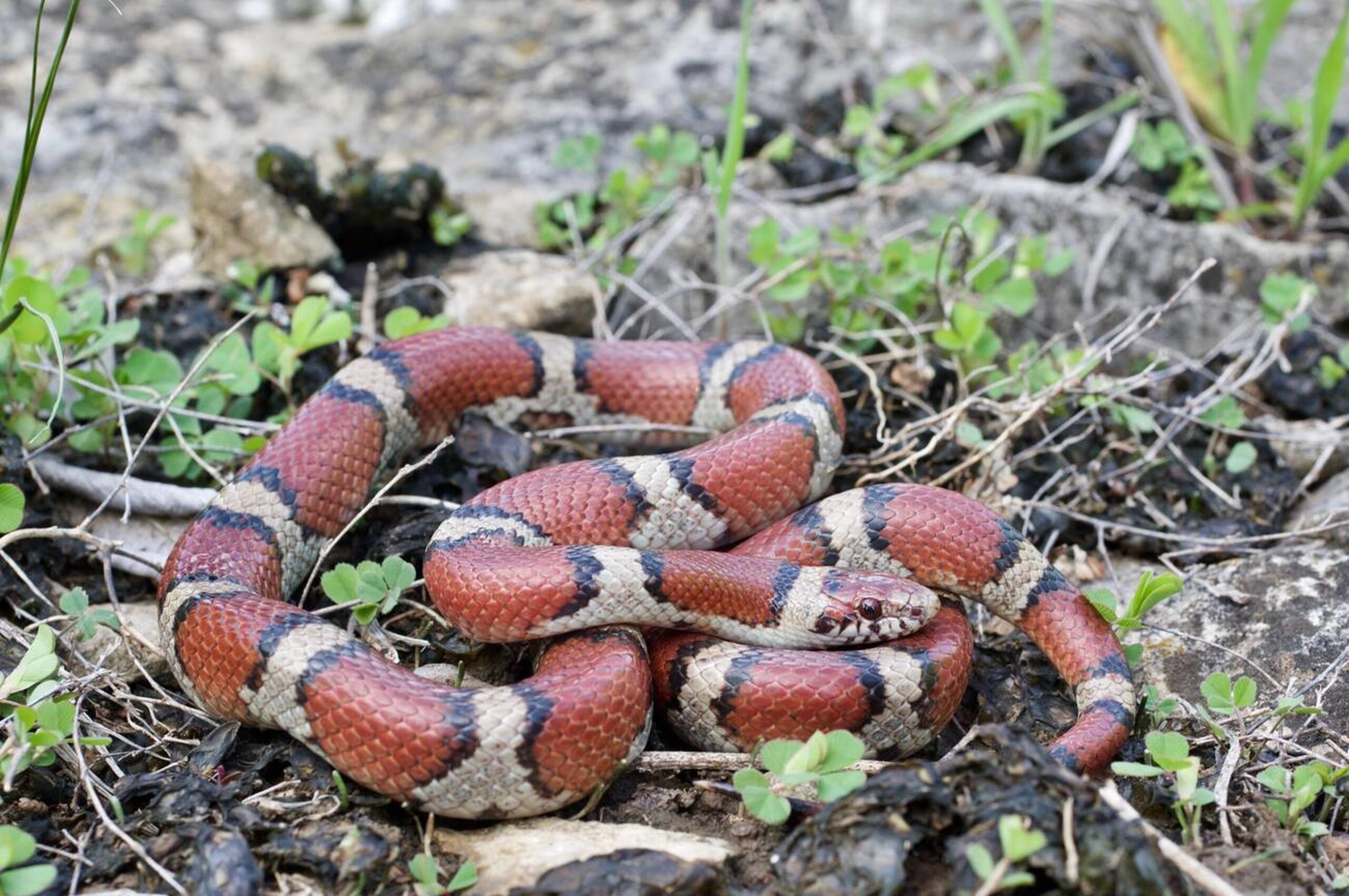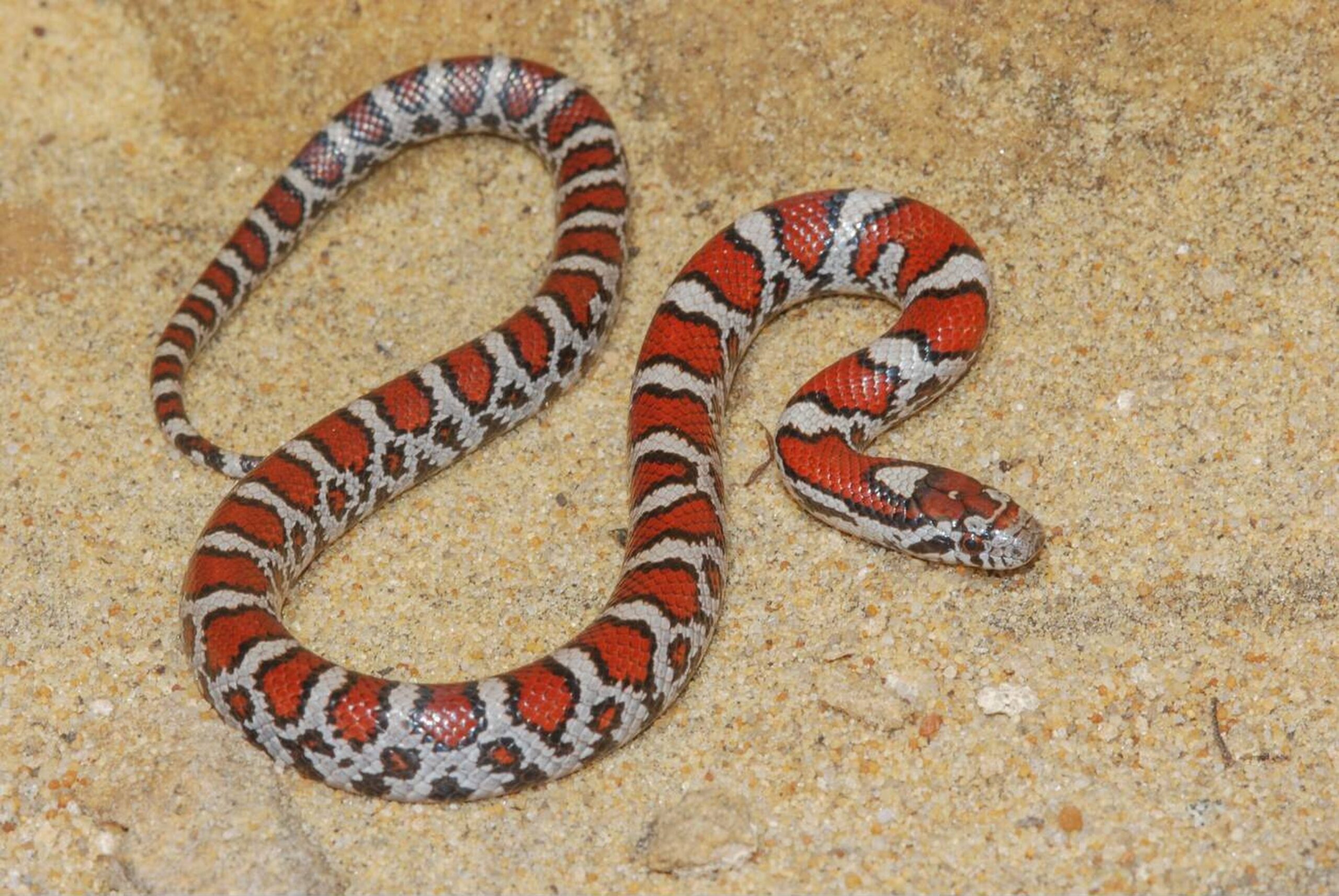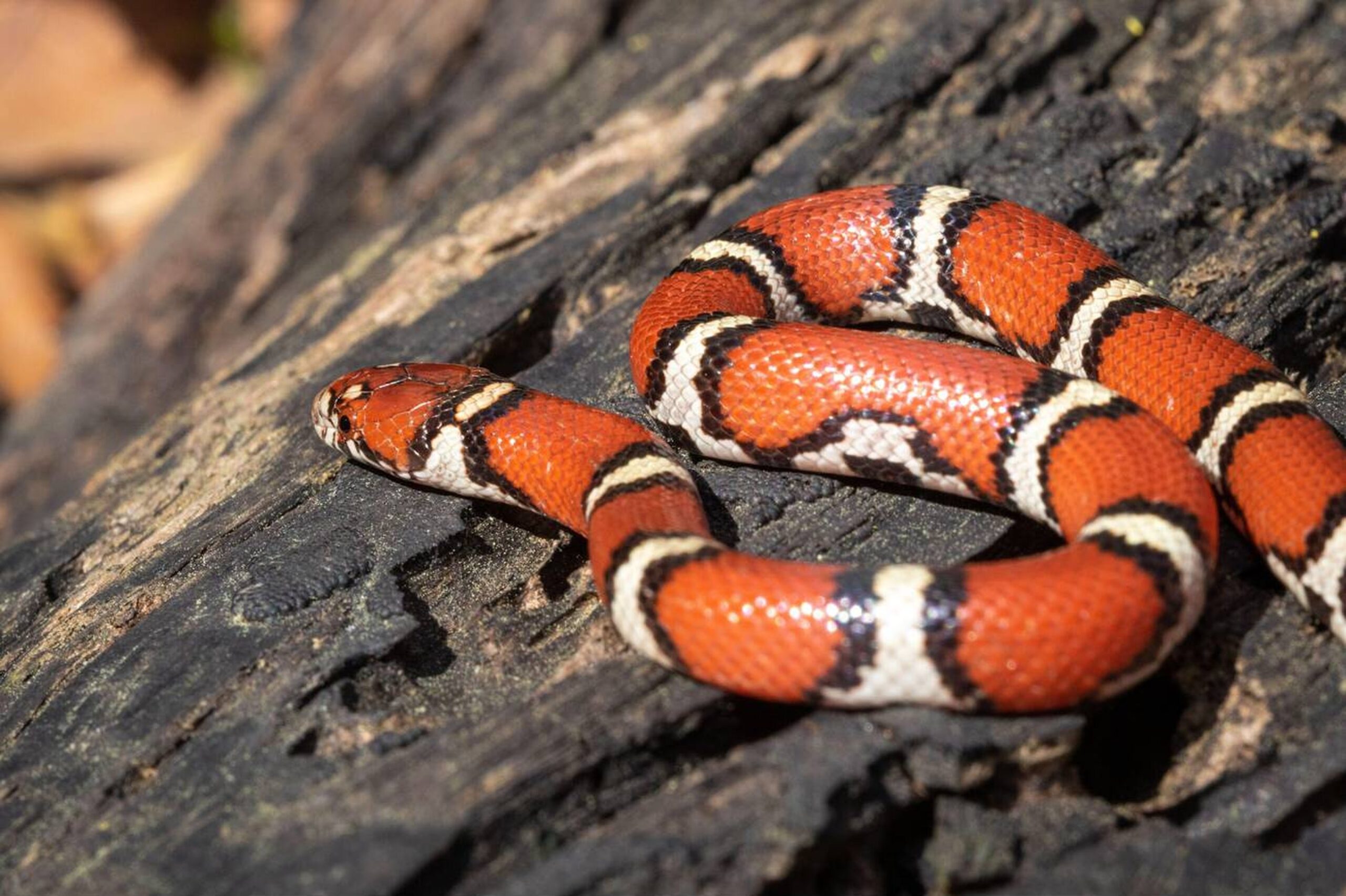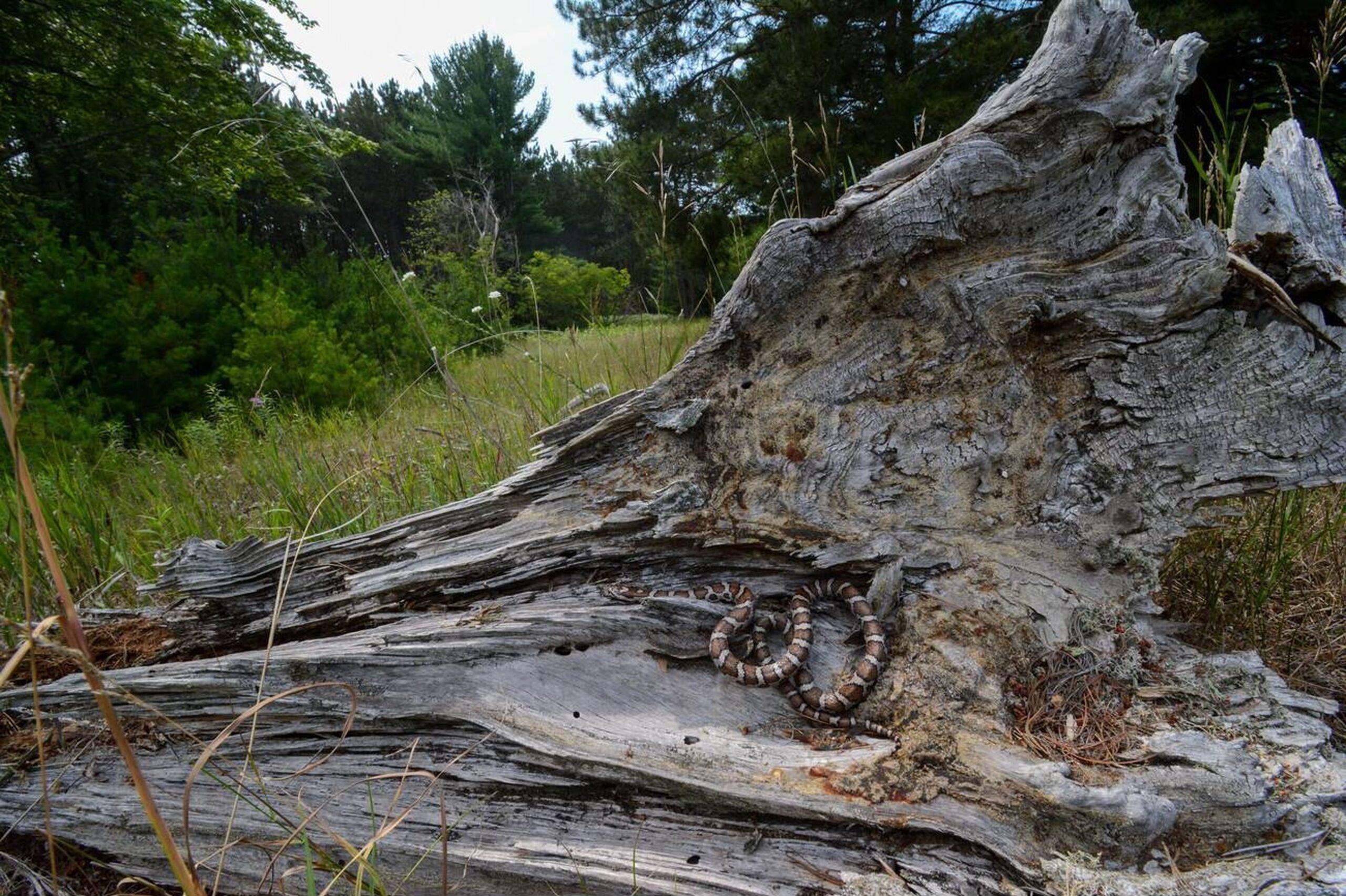Introduction
Have you ever spotted a snake in the wild and wondered whether it was dangerous or not? The Mississippi Milk Snake is one species that often gets mistaken for something venomous. But here’s the good news — it’s completely harmless! In this blog, we’ll explore everything you need to know about this stunning, non-venomous species, including how to identify it, where it lives, what it eats, and how to safely interact with it in the wild.
Whether you’re a nature lover, a hiker, or someone interested in learning more about the diversity of snakes, this guide will give you a deeper understanding of the Mississippi Milk Snake.
What Is a Mississippi Milk Snake?
The Mississippi Milk Snake (Lampropeltis triangulum elapsoides) is a strikingly beautiful species of snake found primarily in the southern United States, particularly in Mississippi, Louisiana, and parts of Arkansas. It’s a subspecies of the Eastern Milk Snake, and like other milk snakes, it belongs to the Colubridae family. Despite being often mistaken for venomous snakes due to its similar coloration to the Coral Snake, the Mississippi Milk Snake is entirely non-venomous and plays an important role in controlling local rodent populations.
Key Identification Features of Mississippi Milk Snake
Appearance
The Mississippi Milk Snake is known for its bright, striking coloration. Here’s how to identify it:
-
Size: Typically grows between 18 and 30 inches long.
-
Coloration: It has a beautiful pattern of red, black, and white or cream-colored bands that encircle its body, making it look quite similar to the Coral Snake.
-
Distinct Features: The red bands are usually bordered by black or dark-colored bands, with white or cream-colored bands in between.
Comparison with Other Species
It’s easy to confuse the Mississippi Milk Snake with venomous species due to its color pattern, but there are key differences:
-
Coral Snakes vs. Milk Snakes: A well-known saying goes, “Red on yellow, kill a fellow; red on black, friend of Jack.” This rhyme is a simple way to remember the difference between a venomous Coral Snake and a non-venomous milk snake — their color patterns are very similar, but the bands in the milk snake will typically be bordered by black, not yellow.
Mississippi Milk Snake Habitat and Geographical Range
Where Do They Live?
Mississippi Milk Snakes are typically found in woodlands, grasslands, and areas near water. They prefer regions that provide plenty of cover and places to hide, like fallen logs, rock piles, and brush piles.
-
Geographical Range: Mainly in Mississippi, Louisiana, and Arkansas, but they can occasionally be found in surrounding areas.
Preferred Environment
These snakes thrive in environments with ample shelter and access to food. Their habitat includes areas such as:
-
Wooded forests
-
Fields
-
Swamps
-
Near streams or wetlands
Mississippi Milk Snakes are typically found in woodlands, grasslands, and areas near water. To learn more about local habitats and wildlife in Mississippi, you can visit the Mississippi Department of Wildlife, Fisheries, and Parks.
Behavior and Diet of Mississippi Milk Snake
Diet
Mississippi Milk Snakes are carnivores and feed primarily on small rodents, amphibians, lizards, and insects. Their role in controlling the local rodent population helps keep ecosystems in balance.
-
Fun Fact: Milk snakes are skilled hunters, often seen hunting during the night (nocturnal).
Behavior
These snakes are non-aggressive and generally avoid human interaction. When threatened, a Mississippi Milk Snake will usually try to escape rather than fight. If cornered, it may flatten its body or vibrate its tail to mimic the behavior of venomous species like rattlesnakes.
-
Mimicry: While it doesn’t pose a threat, this mimicry helps it avoid predators by creating the illusion of being a dangerous snake.
Venom and Safety Tips for Mississippi Milk Snake
Non-Venomous
Despite its striking resemblance to venomous species, the Mississippi Milk Snake is harmless. It poses no danger to humans. It is important to note that, while it may look threatening due to its bold coloration, it has no venom and is not aggressive.
Safety Tips
-
Keep a safe distance: If you come across a Mississippi Milk Snake, admire it from afar. Like all wildlife, it should be respected.
-
Don’t try to handle or provoke it: These snakes aren’t aggressive, but it’s always better to let them go about their business.
Common Myths About Mississippi Milk Snakes
Myth #1: Milk Snakes are Poisonous
Fact: Despite their colorful appearance, milk snakes are completely non-venomous. They are often mistaken for dangerous species, but they pose no threat.
Myth #2: Milk Snakes Always Rattle Like Rattlesnakes
Fact: Milk snakes sometimes mimic rattlesnakes by shaking their tails, but they do not have a rattle, and they are not aggressive unless threatened.
Myth #3: Milk Snakes are Extremely Dangerous
Fact: Milk snakes may be mistaken for venomous species, but they are quite shy and avoid human contact. They are beneficial to have around, as they help control pests like mice and insects.
Conservation Status of Mississippi Milk Snake
The Mississippi Milk Snake is not currently considered endangered, but habitat destruction and human encroachment pose threats to its population. It’s important to support local conservation efforts to protect this beautiful species.
-
Conservation Tip: Avoid disturbing their habitats. If you see one, appreciate it from a distance and let it go about its important work.
The Mississippi Milk Snake is not currently considered endangered, but habitat destruction and human encroachment pose threats to its population. Supporting conservation efforts is important, and organizations like the National Snake Conservation Society provide resources for safe snake observation and habitat protection.
How to Safely Observe a Mississippi Milk Snake
If you happen to spot a Mississippi Milk Snake in the wild, here are some tips to interact safely:
-
Keep a respectful distance: Admire the snake from afar.
-
Don’t touch or pick it up: Milk snakes are harmless but should not be handled in the wild.
-
Take pictures from a distance: Use a camera or smartphone to capture a photo without getting too close.
Interesting Fun Facts About Mississippi Milk Snakes
-
They are excellent climbers and can scale trees in search of food.
-
They are beneficial to farmers because they help control rodents and pests.
-
They are not picky eaters, consuming small animals like mice, frogs, and even small birds.
-
Milk snakes can be found in a variety of colors and patterns, making them one of the most visually appealing snakes.
The Mississippi Milk Snake is a fascinating, beautiful species that plays an important role in its ecosystem. Though it may look intimidating, it’s completely harmless and non-venomous.
Next time you’re hiking or exploring the wild areas of Mississippi, Louisiana, or Arkansas, remember to appreciate these wonderful creatures from a safe distance.
Want the full guide with photos and safety tips? Visit boxandhound.com for the complete breakdown!





